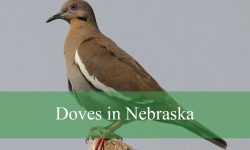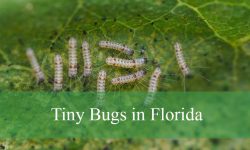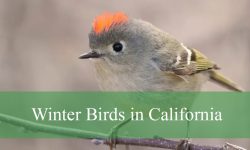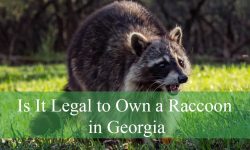Michigan is renowned for its rich and varied birdlife, with its diverse ecosystems supporting a wide range of species throughout the year. From the expansive Great Lakes coastline to dense forests and wetlands, this state offers abundant opportunities for birdwatchers and nature lovers. If you want to transform your yard into a welcoming haven for birds, understanding the seasonal rhythms and specific needs of birds is essential.
Each season brings its own unique challenges and opportunities for attracting birds. Migration patterns shift, food availability fluctuates, and birds change their behaviors to cope with the weather. By aligning your yard’s offerings with these natural cycles, you can enjoy visits from an impressive variety of species year-round, creating a dynamic and lively outdoor space.
This guide will explore how to attract more birds to your Michigan yard by season. From providing appropriate food sources and shelter to maintaining water supplies and protecting nesting sites, you will learn how to adapt your yard through spring, summer, fall, and winter for maximum bird appeal.
Attracting Birds in Michigan During Spring
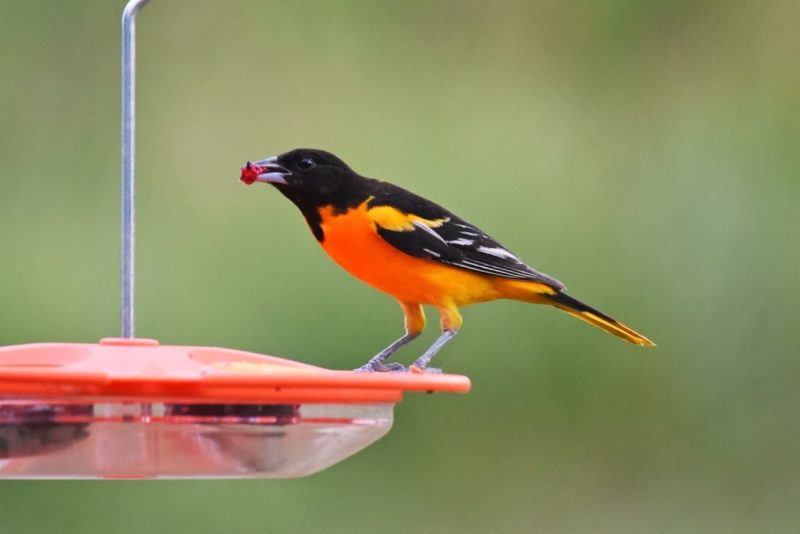
Spring is a magical time for bird enthusiasts in Michigan. As the snow melts and temperatures begin to rise, migratory birds return from their wintering grounds, and local species become active in preparing for breeding. The explosion of fresh buds, flowers, and insects creates an abundance of natural food, drawing many birds back to your yard.
Creating a safe and natural habitat during spring is critical. Birds are busy building nests, laying eggs, and raising young, so they need dense shrubs, trees, and native plants to hide from predators and find suitable nesting sites. Incorporating native Michigan plants like serviceberry, dogwood, and viburnum not only provides cover but also produces fruits that serve as vital nutrition for many species.
During this season, birds shift their diet toward protein-rich foods like insects and larvae to feed their growing chicks. By encouraging native flowering plants that attract pollinators such as bees and butterflies, you naturally boost insect populations for insectivorous birds. Supplementing with mealworms or nectar feeders for hummingbirds can also enhance your yard’s attractiveness.
Providing fresh water is equally important in spring. Birds require water for drinking and bathing as the weather warms up. Setting up a birdbath or a shallow water feature near cover ensures that birds can access water safely. Remember to clean and refill these water sources regularly to keep them inviting and safe for your feathered visitors.
How to Attract Birds in Michigan in Summer
Summer in Michigan often brings warm, sometimes hot, weather with longer daylight hours. This season is a critical period for many birds as they continue to care for their young and establish territories. Your yard can become a bustling hotspot for bird activity if you focus on their specific summer needs.
Maintaining an abundant supply of nutritious food is essential in summer, especially for parents feeding hungry chicks. High-energy seeds such as sunflower seeds, as well as fresh fruits like berries, can help sustain birds. Offering a variety of feeding options encourages different species to visit and stay.
Water availability takes on new importance in the summer heat. Birds need water not just for drinking but also for cooling off and bathing to maintain healthy feathers. A birdbath or water fountain that creates moving water will attract more birds, as the sound and sight of water signals a safe watering hole. Misting systems or sprinklers that simulate light rain can also entice birds to bathe.
Providing ample shade and shelter from the hot sun helps birds conserve energy and avoid heat stress. Mature trees with dense foliage or fast-growing native shrubs create cool microclimates. If your yard lacks natural shade, consider installing shade structures or pergolas to provide refuge during the hottest parts of the day.
Summer is also a sensitive time for many birds as they protect their young. Minimizing human disturbances, loud noises, and pet activity in your yard can help birds feel secure and increase the likelihood that they will continue nesting and raising their young in your space.
Attracting Birds to Your Michigan Yard in Fall
Fall is a transitional season filled with both preparation and change. Many bird species are busy accumulating energy reserves for their long migrations south, while others are settling in to prepare for Michigan’s approaching winter. Your yard can become an essential stopover or refuge during this crucial time.
One of the most important aspects of fall bird attraction is providing high-energy foods to help birds fatten up. Seeds rich in oils, such as black oil sunflower seeds, and nutrient-dense fruits like crabapples, elderberries, and sumac berries, offer the calories birds need for migration or surviving winter. Maintaining fruit-bearing native shrubs in your yard is an excellent way to provide natural food sources.
As the weather grows cooler and windier, birds seek protective shelter. Dense evergreen trees and thick shrubbery offer vital windbreaks and cover from predators. Installing birdhouses or roosting boxes designed for wintering species can provide secure overnight shelter.
Water remains necessary but becomes less accessible as temperatures drop. Keeping birdbaths clean and positioned in sheltered spots reduces the risk of water freezing too quickly. Using heated birdbaths or changing the water frequently can ensure birds continue to have access to liquid water well into the cold months.
How to Attract Birds in Michigan During Winter
Winter in Michigan is harsh and unforgiving, but many birds remain throughout the cold season, relying heavily on backyard resources for survival. Attracting birds during winter requires careful attention to their increased needs for food, water, and shelter.
Food is perhaps the most critical factor in winter. Natural food sources like insects and berries become scarce, so consistent feeding is essential. Providing seeds high in fat, such as black oil sunflower seeds, suet cakes, and peanuts, helps birds generate the warmth they need to survive. Since birds burn more calories in cold weather, keeping feeders well-stocked encourages frequent visits.
Water is also vital during winter but challenging to provide due to freezing temperatures. Heated birdbaths or heated water bowls prevent freezing and allow birds to drink and bathe. Birds need to maintain feather condition to insulate themselves against the cold, so bathing opportunities in winter are more important than one might expect.
Winter shelter is a lifeline for many species. Dense evergreens, brush piles, and roosting boxes provide protection from wind and snow. Leaving leaf litter in garden beds can help insulate insects that birds feed on and offers additional cover for small birds seeking refuge.
Year-Round Principles for a Bird-Friendly Michigan Yard
Although the specific needs of birds shift with the seasons, some foundational principles apply throughout the year to help create and maintain a thriving bird habitat.
Choosing native plants is one of the most effective ways to attract and support birds. Native species are adapted to Michigan’s climate and provide food and shelter precisely when birds need it. Additionally, native plants attract the insects that many birds feed on, establishing a natural and sustainable ecosystem.
Avoiding chemical pesticides and herbicides preserves the health of your yard’s ecosystem. These chemicals can be harmful or even fatal to birds directly or indirectly by eliminating their food sources. Organic gardening techniques or integrated pest management can provide safe alternatives.
Offering a variety of food types, water sources, and shelter options increases the diversity of bird species that will visit your yard. Different species have different preferences, so variety ensures your yard appeals to more birds. Observing the birds that frequent your yard can help you refine your offerings over time.
Patience and consistency are key. Attracting birds is a gradual process that may take months or years to fully develop. By staying observant and making adjustments based on bird behavior and seasonal changes, you can create a backyard environment that birds return to year after year.
FAQ about How to Attract More Birds to Your Yard in Michigan
What types of birds can I expect to see in my Michigan yard?
Michigan hosts a variety of birds throughout the year. In spring and summer, you may see colorful warblers, robins, chickadees, and hummingbirds. During fall migration, many species pass through, including sparrows and thrushes. In winter, hardy residents like cardinals, juncos, and woodpeckers stay active in yards.
How does the changing Michigan climate affect bird activity in my yard?
Michigan’s four distinct seasons cause birds to migrate, breed, or adapt their behavior accordingly. In spring, many birds return from migration to nest. Summer is a time for raising young, while fall sees preparation for migration or winter survival. Winter attracts species adapted to cold or those that remain year-round.
What kind of food should I provide to attract birds throughout the year?
Providing a variety of food types suited to the season is key. In spring and summer, offer protein-rich options like mealworms and fresh fruits. During fall and winter, high-fat seeds such as sunflower seeds and suet cakes help birds build energy reserves. Avoid feeding bread or processed foods that can harm birds.
How important is providing water for birds in Michigan yards?
Water is essential year-round for drinking and bathing. In warmer months, birdbaths or shallow water features attract many species. In winter, heated birdbaths or regularly refreshed water help birds stay hydrated despite freezing temperatures. Clean water also prevents disease.
What plants should I grow to attract more birds to my yard in Michigan?
Native plants are the best choice for supporting local birds. Species such as serviceberry, dogwood, elderberry, and sumac provide natural food and shelter. Native flowering plants attract pollinators and insects that insectivorous birds feed on, creating a balanced ecosystem.
How can I make my yard safer and more inviting for nesting birds?
Provide dense shrubs and trees for cover, and consider installing birdhouses suitable for local species. Minimize disturbances during nesting season by reducing loud noises and limiting pet access. Avoid pesticides and maintain a clean environment to protect nests from predators and hazards.
Can feeding birds in winter harm them or make them dependent?
Feeding birds in winter generally helps them survive harsh conditions when natural food is scarce. To avoid dependency, continue feeding consistently throughout the season and supplement natural food sources by maintaining native plants. Regularly clean feeders to prevent disease.
How often should I clean my bird feeders and birdbaths?
Clean feeders and birdbaths at least once every two weeks, and more often in wet or warm weather. This prevents the spread of diseases among birds and keeps the feeding area safe and attractive. Use a mild bleach solution or vinegar and rinse thoroughly before refilling.
Are there any common mistakes to avoid when trying to attract birds to my Michigan yard?
Avoid feeding inappropriate foods like bread, salty snacks, or processed items. Don’t place feeders too close to windows to reduce collision risk. Avoid excessive pesticide use that harms birds and insects. Finally, be patient, as creating a bird-friendly habitat takes time and careful planning.
Conclusion
Michigan’s beautiful and diverse environment supports an impressive variety of birds that can become frequent visitors to your yard if given the right conditions. Each season presents unique opportunities and challenges for attracting birds, from providing the right foods and water sources to creating shelter and safe nesting areas.
By tuning into the natural rhythms of Michigan’s seasons and adapting your yard accordingly, you can enjoy vibrant birdlife throughout the year. Whether it’s welcoming colorful warblers in spring, supporting busy parents in summer, feeding migrating species in fall, or providing refuge during the cold winter months, your yard can become a sanctuary for birds and a source of joy for you.
Start by planting native vegetation, supplying fresh water, and offering seasonally appropriate food. Keep your yard chemical-free and provide quiet, safe spaces where birds can thrive. With time, your efforts will transform your outdoor space into a lively, bird-friendly oasis that reflects the natural beauty of Michigan’s wild inhabitants.

